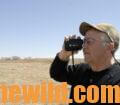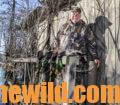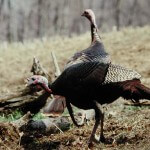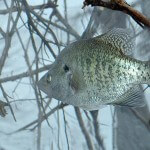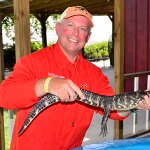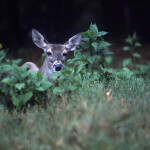Editor’s Note: Many states are now in their postrut times of deer season. Terry Drury of Drury Outdoors https://www.druryoutdoors.com/, along with his brother, Mark, are two of the most well-known and most-recognized deer hunters in the nation, due to their TV shows, videos and podcasts. One of the questions they’re often asked is, “How do you take a buck after the rut?” This week Terry will tell us how to hunt after the rut.
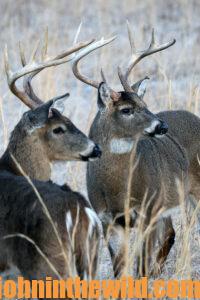 On the same afternoon that I took the 11 pointer at my brother Mark’s farm, my niece, Taylor, took a nice buck on a farm 25-miles away. We’ve learned that on the day when deer are moving after the rut, there usually will be a tremendous buck movement on that same day on other properties close to the land where you’re seeing bucks. After I took my buck, we sent Taylor a text that said, “Bingo, I’ve got my buck. Now it’s your turn to take one.” Only a few minutes later, she took a 148-inch 5-1/2-year-old 8-pointer, with a muzzleloader.
On the same afternoon that I took the 11 pointer at my brother Mark’s farm, my niece, Taylor, took a nice buck on a farm 25-miles away. We’ve learned that on the day when deer are moving after the rut, there usually will be a tremendous buck movement on that same day on other properties close to the land where you’re seeing bucks. After I took my buck, we sent Taylor a text that said, “Bingo, I’ve got my buck. Now it’s your turn to take one.” Only a few minutes later, she took a 148-inch 5-1/2-year-old 8-pointer, with a muzzleloader.
I believe the elements that have to come together to consistently take bucks after the rut are:
- cool temperatures;
- a rising barometric pressure;
- plenty of food for the bucks to eat; and
- a place that has had very little or no hunting pressure throughout the entire deer season.
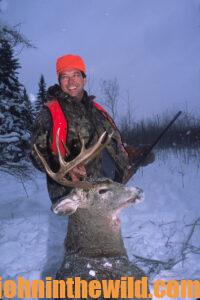 Those cold temperatures will drive those bucks to a good food source where they haven’t encountered a hunter before and to a spot where you probably have trail-camera pictures of the buck, especially before the season.
Those cold temperatures will drive those bucks to a good food source where they haven’t encountered a hunter before and to a spot where you probably have trail-camera pictures of the buck, especially before the season.
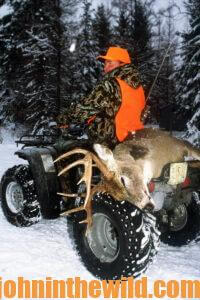 If you’re hunting a small property, you still can manage your deer to produce older-age-class bucks. Mark tries to meet with the landowners whose properties touch his land. Many of those adjacent landowners will manage deer the same way Mark does. They’ll let the little bucks walk and allow those bucks become older bucks. Mark and some of his adjacent landowners also often share trail-camera pictures of the bucks they’re seeing before, during and after the season. They’ll often agree on the bucks they’ll pass-up to allow those bucks to grow, obtain heavier body weights and produce more and bigger antlers. You’ll be amazed at the size of bucks that will grow, if you have the cooperation of neighbors around the property you hunt. The other advantage to this system of management is that all the landowners in that area who are participating in this type buck management can begin to develop a history of the bucks for which they get trail-camera pictures. If you have trustworthy neighbors that you know won’t harvest a buck that you and the other neighbors agree not to harvest until he’s 5-1/2 years old, you can grow some really-big bucks on several small properties that are contiguous to one another.
If you’re hunting a small property, you still can manage your deer to produce older-age-class bucks. Mark tries to meet with the landowners whose properties touch his land. Many of those adjacent landowners will manage deer the same way Mark does. They’ll let the little bucks walk and allow those bucks become older bucks. Mark and some of his adjacent landowners also often share trail-camera pictures of the bucks they’re seeing before, during and after the season. They’ll often agree on the bucks they’ll pass-up to allow those bucks to grow, obtain heavier body weights and produce more and bigger antlers. You’ll be amazed at the size of bucks that will grow, if you have the cooperation of neighbors around the property you hunt. The other advantage to this system of management is that all the landowners in that area who are participating in this type buck management can begin to develop a history of the bucks for which they get trail-camera pictures. If you have trustworthy neighbors that you know won’t harvest a buck that you and the other neighbors agree not to harvest until he’s 5-1/2 years old, you can grow some really-big bucks on several small properties that are contiguous to one another.
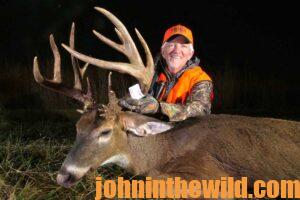 Another thing I like about hunting post-rut bucks is that you can kind of go on cruise control. By that I mean, if you’ve been hunting hard during the rut and in the postrut, you can sleep-in in the mornings. Just go out in the afternoons to the spots where no one has hunted all season, where there’s a favorable wind to hunt, an abundance of food for the deer and trail-camera pictures of deer coming to that same spot before the season and maybe coming to that same place for maybe several years. I really like to hunt the late season. For me, those hunts are much more-relaxed type of deer hunting, and I feel the odds are much better for taking older-age-class bucks that they often are when I hunt the rut.
Another thing I like about hunting post-rut bucks is that you can kind of go on cruise control. By that I mean, if you’ve been hunting hard during the rut and in the postrut, you can sleep-in in the mornings. Just go out in the afternoons to the spots where no one has hunted all season, where there’s a favorable wind to hunt, an abundance of food for the deer and trail-camera pictures of deer coming to that same spot before the season and maybe coming to that same place for maybe several years. I really like to hunt the late season. For me, those hunts are much more-relaxed type of deer hunting, and I feel the odds are much better for taking older-age-class bucks that they often are when I hunt the rut.
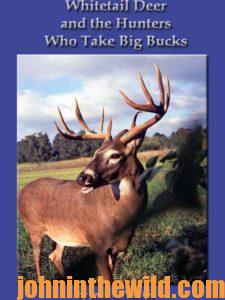 To learn more about hunting deer, check out John E. Phillips’ book, “Whitetail Deer and the Hunters Who Take Big Bucks,” available in Kindle, print and Audible at http://amzn.to/2bYwYOK. You may have to copy and paste this link into your browser. (When you click on this book, notice on the left where Amazon says you can read 10% of this book for free and hear 10% for free). On the right side of the page and below the offer for a free Audible trial, you can click on Buy the Audible book. To see more of John’s deer-hunting books, visit www.amazon.com/author/johnephillips. John and Denise Phillips’ new book, “The Recipes You Can’t Live Without,” that’s full of delicious, time-tested recipes for cooking wild game and fish and also ideas for breakfasts at your hunting club just was published in print this month. Go to https://www.amazon.com/dp/B09MYTMSMH?ref_=pe_3052080_397514860 to learn more.
To learn more about hunting deer, check out John E. Phillips’ book, “Whitetail Deer and the Hunters Who Take Big Bucks,” available in Kindle, print and Audible at http://amzn.to/2bYwYOK. You may have to copy and paste this link into your browser. (When you click on this book, notice on the left where Amazon says you can read 10% of this book for free and hear 10% for free). On the right side of the page and below the offer for a free Audible trial, you can click on Buy the Audible book. To see more of John’s deer-hunting books, visit www.amazon.com/author/johnephillips. John and Denise Phillips’ new book, “The Recipes You Can’t Live Without,” that’s full of delicious, time-tested recipes for cooking wild game and fish and also ideas for breakfasts at your hunting club just was published in print this month. Go to https://www.amazon.com/dp/B09MYTMSMH?ref_=pe_3052080_397514860 to learn more.

